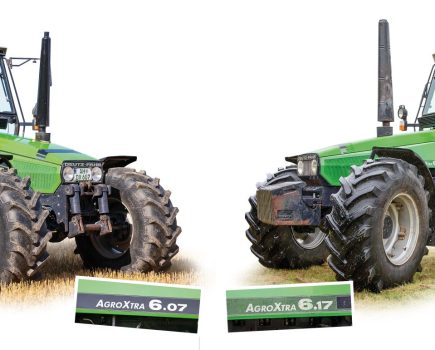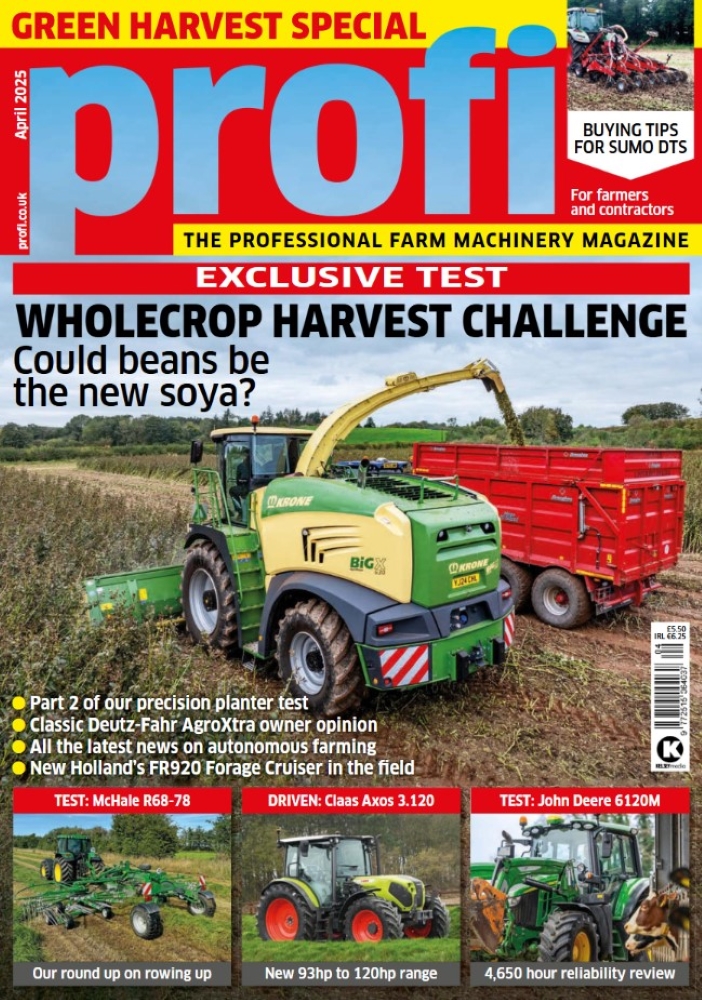We had the chance to operate Krone’s new four-rotor rake, the TC1570, in third cut last season. Keep reading to find out why the firm has gone with a V formation.
The new Swadro TC1570 rake is easy to distinguish from other four-rotor models on the market. Rather than have separate front and rear arms, it adopts the V-shaped frame concept from Krone’s six-rotor rake.
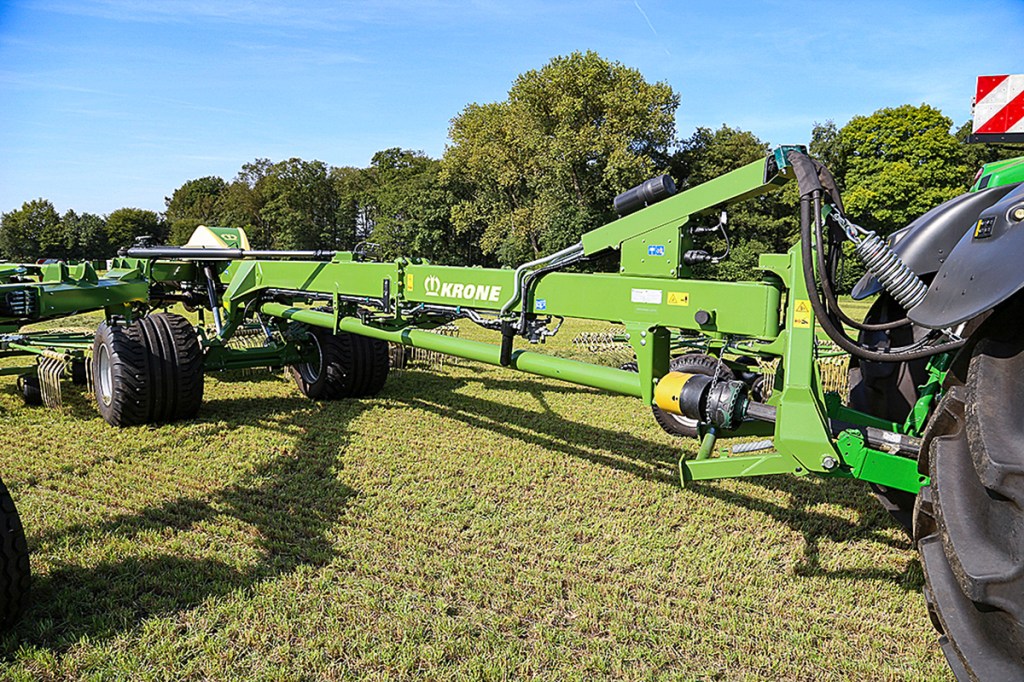
Mechanical drive
The rake is hitched on to the tractor with a cross shaft for Cat. II or III couplers. Drive to the rotors is completely mechanical, with all the drivelines kept as straight as possible through a unique central gearbox. This eases the burden on universal joints and aids with maximising efficiency. The front rotors spin 25% faster than those at the rear. Each rotor also has its own overload protection.
This V-shaped layout is currently novel in the four-rotor rake market. But it is not just about being different, as this layout allows the working width to be infinitely variable, adjustable from 11.00m to 15.70m. Another big plus is that each arm can be controlled independently for raking in corners and avoiding obstacles.
To help with ground following, there is a 15/55-17 gauge wheel at the front of each arm. These wheels can rotate through 360⁰ and are not only used to help guide the rake in work but also support the TC1570 while folding into its transport position and then lifting clear of the ground.
Comfort control for the rotors
The hydraulic rotor suspension takes place in two places. It is integrated into the folding ram to transfer some of the weight to the main beam, thereby taking pressure off the individual rotors. There is additional relief for the front rotors through the V-boom. The ground pressure of the rotors can be steplessly adjusted on the terminal from 0% (minimum ground pressure) all the way up to 100% (maximum pressure).
Along with this, there is a hydraulic cylinder in the V-frame that reduces the load on the jockey wheel. Two settings can be saved on the screen, so you can easily swap between the two. This is an active system, so that the rake’s suspension automatically adjusts to the working width.
Another special feature in the rotor setting department is the fully integrated vibration damping system, which consists of nitrogen accumulators that are installed in the lifting rams and are automatically activated in headland position. In addition to this, the Soft-Down automatic lowering system is designed for protecting the sward and the crop — the rotors are slowed down shortly before touching down.
The raking height is also set electrically, either altering the individual rotors or all four at once. For the latter you can choose which rotor is the one you set, before the other three automatically follow suit. And if that wasn’t enough you can also save two different rake heights.
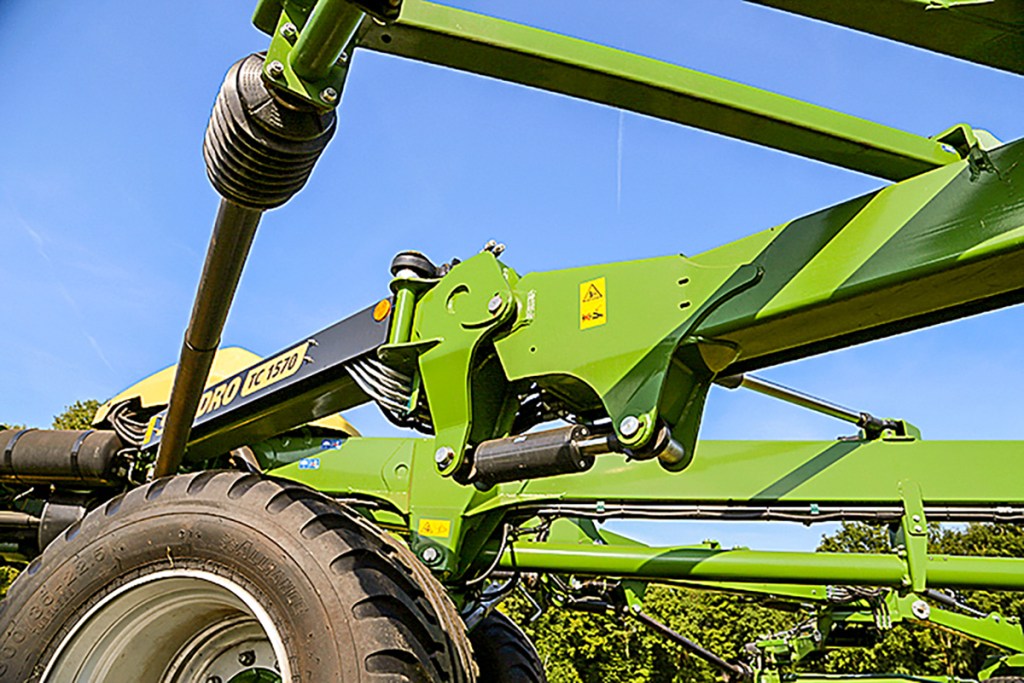
Joystick and terminal
As standard, the rake is operated through current ISObus-compatible tractor terminals. There is also the option of using Krone’s basic DS500 terminal (£1,530), the CCI800 (£2,450) or the CCI1200 (£4,085). Another Krone option is the CCIA3 joystick for £890. Section control (£785) can also be activated as an option.
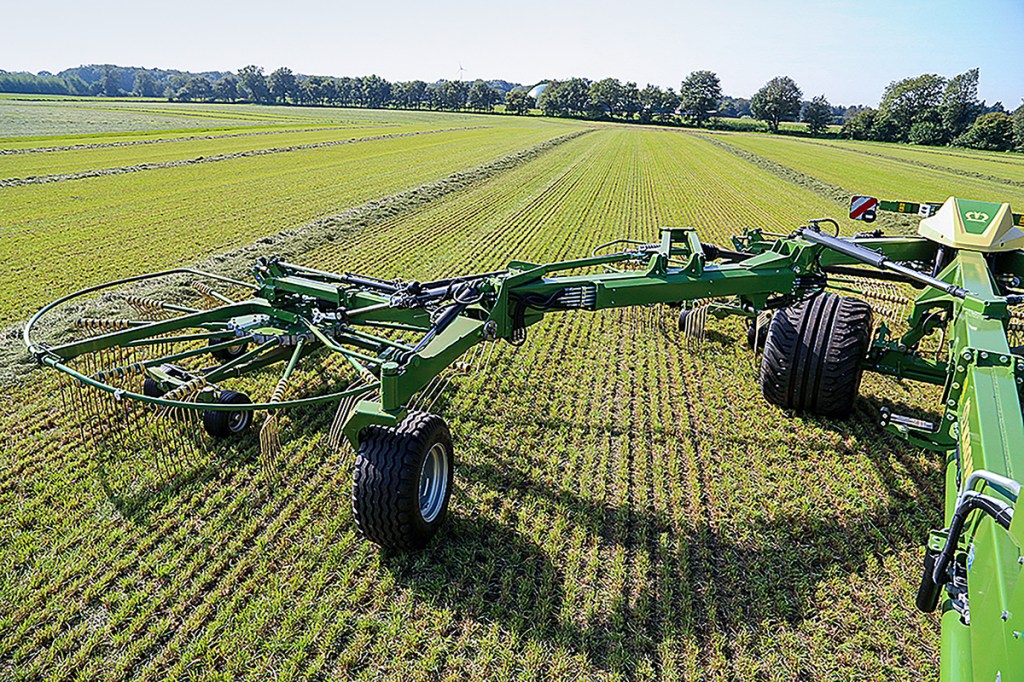
Performance
The TC1570 we used had all of the toys, so we were able to try all of the setting options. The V-frame and rotor setting options are very different from previous or alternative designs. Thanks to the jockey wheels, the front rotors are quiet even when driving relatively fast.
Headland turns are equally smooth when you use the lift height setting functions in combination with the dampers — you can even turn at speed without any swaying or rocking coming from the rake.
And then there is the nifty section control capability to add to the mix. At the headland and in field corners, the row is no longer torn apart, putting extra grass in the swath. It takes pressure off the operator.

Summary
With the TC1570, Krone has introduced the widest four-rotor rake to date. It is not often you see the usual four-rotor rake design challenged, but the engineering team has certainly done that with this new Swadro, making it smooth and stable even when cracking on.
The rake provides a wide range of setting options, which are very cleverly combined. Navigating the menu is similarly easy, so the user should be happy to tinker with all of the numerous setting options.
Christian Brüse
For more up-to-date farming news click here and subscribe now to profi and save.




